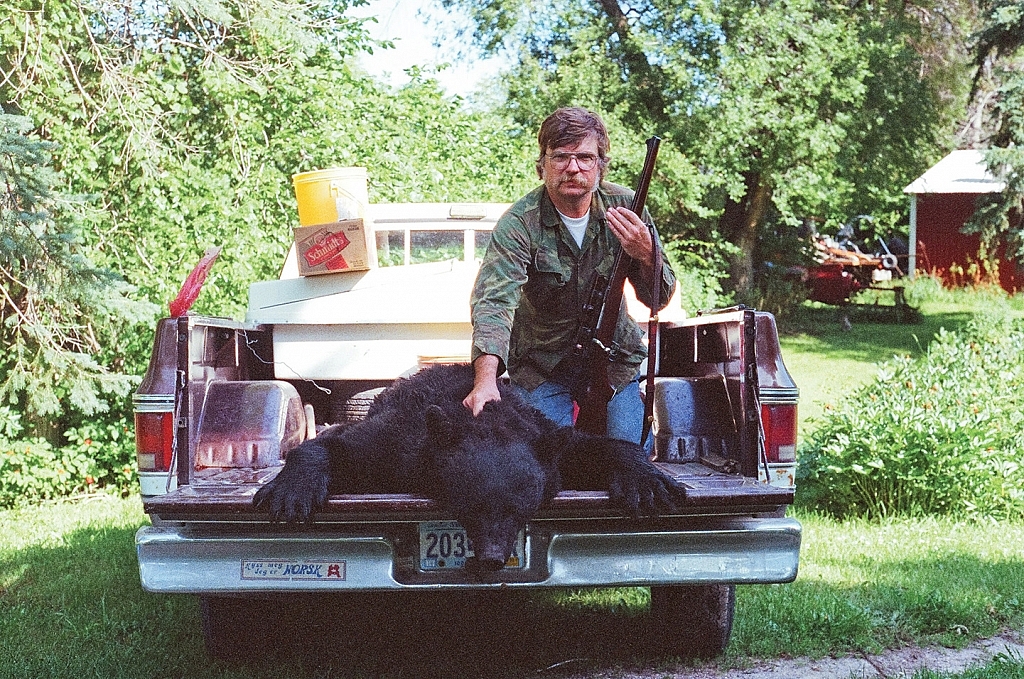
It wasn’t that simple, of course. The Yukon Gold Rush and the Boer War got in the way, and Bell shot meat for the first and got captured in the second. But when things settled down, the Lee acquitted itself well: 63 bull elephants the first time out, 50 Cape buffalo for meat and leather, zebras and giraffes for trade, and two lions for threatening the pack train, all without serious incident or failure.
Bell shot numerous rifles after that: a .318 Westley Richards, a .450/400 Jeffery by Thomas Bland (with the triggers wired together so both barrels went off simultaneously!), and a 6.5 x 54 Mannlicher Schoenauer (“the most beautiful rifle ever made”).
A custom gun? After his first load of ivory, Bell could afford any rifle in the world. He chose a 7 x 57, a German Mauser, slicked up in England by Rigby and marked .275 in the English fashion. Why? Likely because Bell recalled being targeted by Boer riflemen with their M-95 Mausers some years before. Bell kept tally on that Rigby-Mauser. Expending 1,200 rounds of military full-metal jacket, the rifle took 800 elephants, with an average of 1.5 shots per kill.
Bell ignores our astonishment. Speaking from beyond the grave, he teases us with a single question: Why, of all the guns he used, did the Mauser slug make a particular whine upon exiting an elephant’s skull?
Back up, Bwana Tembo. You mean a 173-grain round-nosed .28-caliber solid, loafing along but whirling like a dervish, could shoot clean through six feet of hide and bone and brain and still go singing off into the mopane never-never, yet be audible above a riot of other enraged elephants, all with scant report and almost no recoil?
Bell’s men called it magic. I can’t peg it as physics or voodoo, but I know this: A hunter would do well with a rifle like that. And this is the story of how—and why—two men on opposite sides of the globe chose to build theirs. Two rifles, both quite different, yet of the same heart.
THE SOUL OF ANY RIFLE is its action. Bell’s wasn’t just a classic; it’s the classic. The first rifle lives in South Carolina and is based on the 1908 Brazilian Mauser, a product of the DMW arsenal in Berlin. Crisp engineering; just cut and reweld
the bolt handle to clear a scope. Restocked, this is the classic sporter based on a military action.
The second is on a civilian action, BRNO Model 21, a 1949 small-ring Mauser, now safe in its final home in New Zealand. Why bother? Well, these double-square bridge models are among the most sought after in the world for good reason. Butterknife bolt handle. Double-set, double-phase trigger, barrel band, wonderful iron sights. Again, that bolt handle underwent a little fiddling to clear a scope, but that’s about all.
Both these rifles can be found in 7 x 57 and with barrels that still shoot like crazy. But why do all this for a sedate old caliber? We have newer, sexier rounds that do the same thing, in new rifles, too. Hardly anybody even chambers a rifle in 7 x 57 anymore, so surely we’re looking at the twilight years of a clunker.
Mauser’s cartridge was an astonishingly modern invention way back in 1892, at the dawn of smokeless powder. Not long after, the Englishman John Rigby, wary of anti-German sentiment, simply renamed it for himself, and so we also have the .275 Rigby. Today, lawyers would be involved. Incidentally, mainstream manufacturers are still using Mauser’s bolt action well over a century after he devised it. The equivalent would be someone designing, say, the A380 airbus or the flat-screen TV back in 1892, and it still being in use today.
But one thing at a time: The 7 mm/08 is widely seen as the heir to Mauser’s patent, though why is hard to understand when you look at the facts. It’s a genuinely effective round, but the Mauser has more case capacity, and infinitely more charisma. It’s like comparing a lunchroom microwave to a wood-fired pizza oven—superficially the same thing, with very different reality.
The Mauser case offers much more to hand-loaders, and in factory ammo the old boy runs riot, with loads ranging from 140 grains up to the long, heavy-for-caliber 175-grain projectiles. The light loads are pleasant and remarkably efficient, even by modern standards. They do the job on deer-sized game with little fuss or recoil, and shoot remarkably flat.

